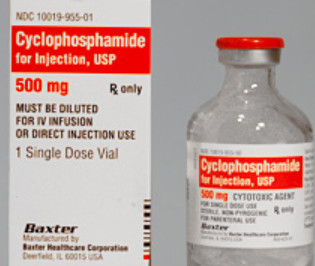
Indications
- Mycosis fungoides (advanced cases): FDA approved.
- Immunobullous diseases.
- Pemphigus vulgaris.
- Bullous pemphigoid.
- Cicatricial pemphigoid.
- Vascultitis
- Churg–strauss syndrome.
- Leukocytoclastic vasculitis (including henoch–schonlein purpura).
- Microscopic polyangiitis.
- Polyarteritis nodosa.
- Wegeners granulomatosis.
- Neutrophilic dermatoses.
- Behçet disease.
- Erythema elevatum diutinum.
- Pyoderma gangrenosum.
- Autoimmune connective tissue disease.
- Dermatomyositis.
- Relapsing polychondritis.
- Scleroderma.
- Severe cutaneous lupus erythematosus.
- Others
- Bullous drug eruptions (stevens–johnson, erythema multiforme major).
- Cytophagic histiocytic panniculitis/subctuaneous.
- Panniculitic t-cell lymphoma.
- Icthyosis linearis circumflexa.
- Langerhans’ cell histiocytosis.
- Lichen myxedematosus/scleromyxedema.
- Multicentric reticulohistiocytosis.
- Severe eczematous dermatitis.
- Xanthoma disseminatum.
Dosage
- Oral doses: 1–3 mg/kg daily, either divided or as a single morning dose.
- Parenteral pulse dosing of: 0.5–1 g/m2 monthly.
Mechanism of action
- Cyclophosphamide is an alkylating agent that acts primarily by cross-linking DNA, leading to inhibition of DNA replication and cell division.
- It crosses the nuclear membrane, covalently binds with DNA, and inhibits the synthesis of guanine, cytosine and adenine, such damage overwhelms cellular repair mechanisms, and mutagenesis, carcinogenesis, and cell death result.
- Cyclophosphamide has a greater effect upon B lymphocytes.
- It suppresses T-cell function (especially of regulatory T cells.
Baseline Monitoring
- Initial evaluation
- Careful history and physical examination.
- Exclude TB.
- Baseline laboratories
- CBC with differential.
- Basic serum chemistry profile.
- Liver and renal function tests.
- Urinalysis.
- Serum pregnancy testing (for females of childbearing potential).
Follow Up Monitoring
- Ongoing laboratory monitoring
- CBC with differential/platelet count > weekly for the first month> biweekly for the next 2 months>monthly > then every 3 months.
- Urinalysis Perform monthly for 2–3 months> every 3 months.
- renal and liver function testing> monthly for 3–6 months then every 3 months.
- Urine cytology if haematuria or after cumulative dose of 50 g.
- Follow-up clinical evaluation
- Complete physical examination(at least biannual).
- Evaluation for lymphadenopathy.
- Stool guaiac and Pap smear(women).
Side effects
- Genitourinary
- Bladder fibrosis, necrosis, contracture, vesicoureteral reflux.
- Dysuria, urgency, microscopic hematuria.
- Hemorrhagic cystitis (5–41%) – dose related and caused by acrolein metabolite >> Mesna may be used as a protective measure and may be administered orally or intravenously.
If five or more red blood cells/high power field appear in the urine, cyclophosphamide should be discontinued.
- Carcinogenesis
- Bladder carcinoma.
- Leukemia.
- Lymphoma (non-Hodgkin’s).
- Squamous cell carcinoma.
- Gastrointestinal
- Anorexia, stomatitis, hepatotoxicity (with high doses).
- Hemorrhagic colitis.
- Nausea, vomiting, diarrhea (seen in up to 70% of patients, treated with antiemetics).
- Hematologic
- Anemia (less common, usually reversible).
- Leukopenia (common, dose-limiting).
- Thrombocytopenia (usually with higher doses).
- Reproductive
- Amenorrhea.
- Azoospermia (improved with testosterone)>>testosterone administration may lessen the risk of this phenomenon.>>Cryopreservation.
- Ovarian failure (partially prevented with luprolide acetate)
- Dermatologic
- Alopecia (anagen effluvium, seen in 5–30%, usually reversible).
- Pigmentation of skin and nails.
- Pigmented band on teeth (irreversible).
- Urticaria or bullous eruptions (Stevens–Johnson syndrome).
Contraindications
- Absolute
- Drug allergy.
- Depressed bone marrow function.
- Lactation (partitions in breast milk).
- Pregnancy (teratogenic).
- Prior history of bladder cancer.
- Relative
- Active infection.
- Impaired hepatic metabolism.
- Impaired renal function.
Drug interactions
- Increased levels of cyclophosphamide: allopurinol, cimetidine, chloramphenicol, succinylcholine.
- Barbiturates and clozapine can increase the risk of agranulocytosis.
- Cyclophosphamide may reduce the levels of digoxin.
- Cyclophosphamide may potentiate the hypoglycaemic
effects of sulphonylurea drugs. - Increased cardiac toxicity: doxorubicin.
- Increased risk of immunosuppression: alefacept.
- Itraconazole and fluconazole may increase the risk of adverse effects with cyclophosphamide.
- Increased risk of bone marrow suppression: rituximab, zidovudine.
- Unpredictable effects can be seen when used with the inhalation anesthetics : halothane and nitrous oxide.
Pregnancy and lactation
- Cyclophosphamide is a first-trimester teratogen and is immunosuppressive in breastfed infants.
- Pregnancy category: D.
- Lactation: Drug excreted in breast milk; should not be used during pregnancy or lactation.
Drug info
- In oncology cyclophosphamide is used as an anti neoplastic agent.
- In dermatology the drug is used as an immunosuppressive and ‘steroid-sparing’ agent.
Precautions
- Bladder complications caused by cyclophosphamide might be reduced by increased fluid intake.
- Bladder cancer induced by cyclophosphamide may arise many years, or even decades, after therapy, and continued monitoring of the lower urinary tract is indicated in all patients who have used the drug.
- Cyclophosphamide should probably not be a first-line therapy for men or women who wish to conceive following treatment.
- Decrease dose or discontinue therapy for WBC < 4000/mm3 or platelets < 100 000/mm3.
- With red blood cells in urine, decrease or discontinue dose and refer to urologist for cystocopy and further evaluation.
- Vigorous hydration(minimal urine output of 100 mL/h (2–3 L/d)) should begin 24 hr before therapy and continue throughout dosing, as this may reduce bladder toxicity.
- Urinalysis with cytologic examination is indicated when the cumulative dose exceeds 50 g, and every 6 months thereafter.
- Live vaccinations are contraindicated during and for 3 months after cyclophosphamide therapy.
- Contraception: should be established in males and females prior to therapy and continued for at least 3 months after treatment has ceased
#Cyclophosphamide #Cyclophosphamide in dermatology